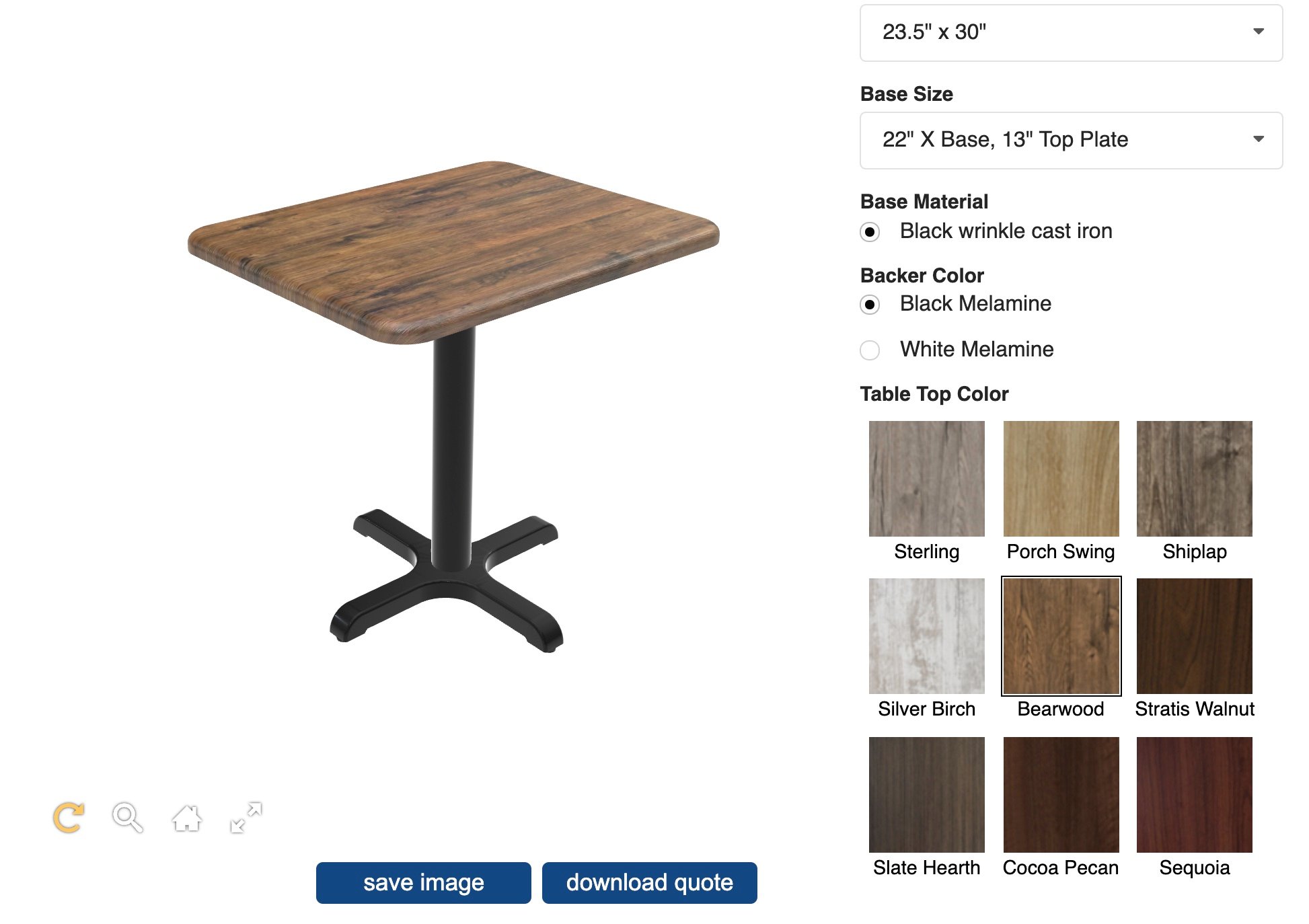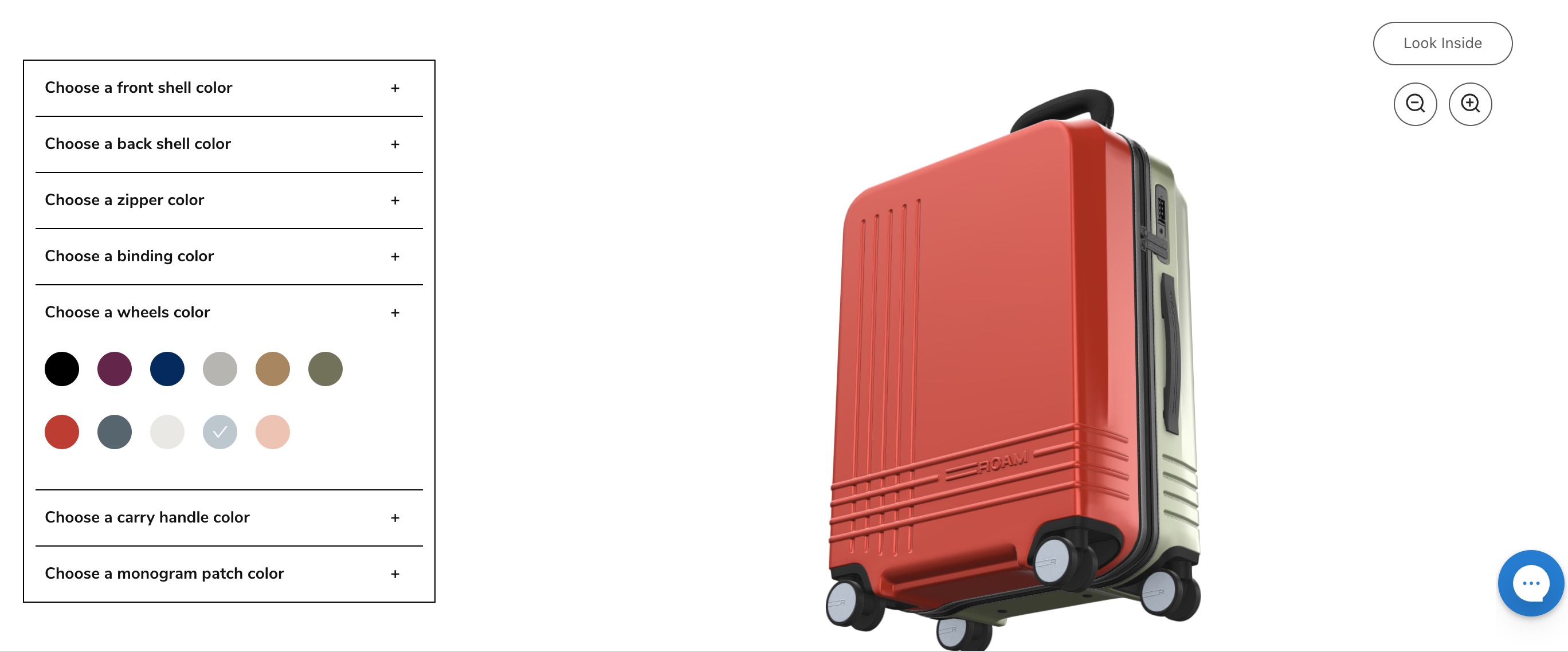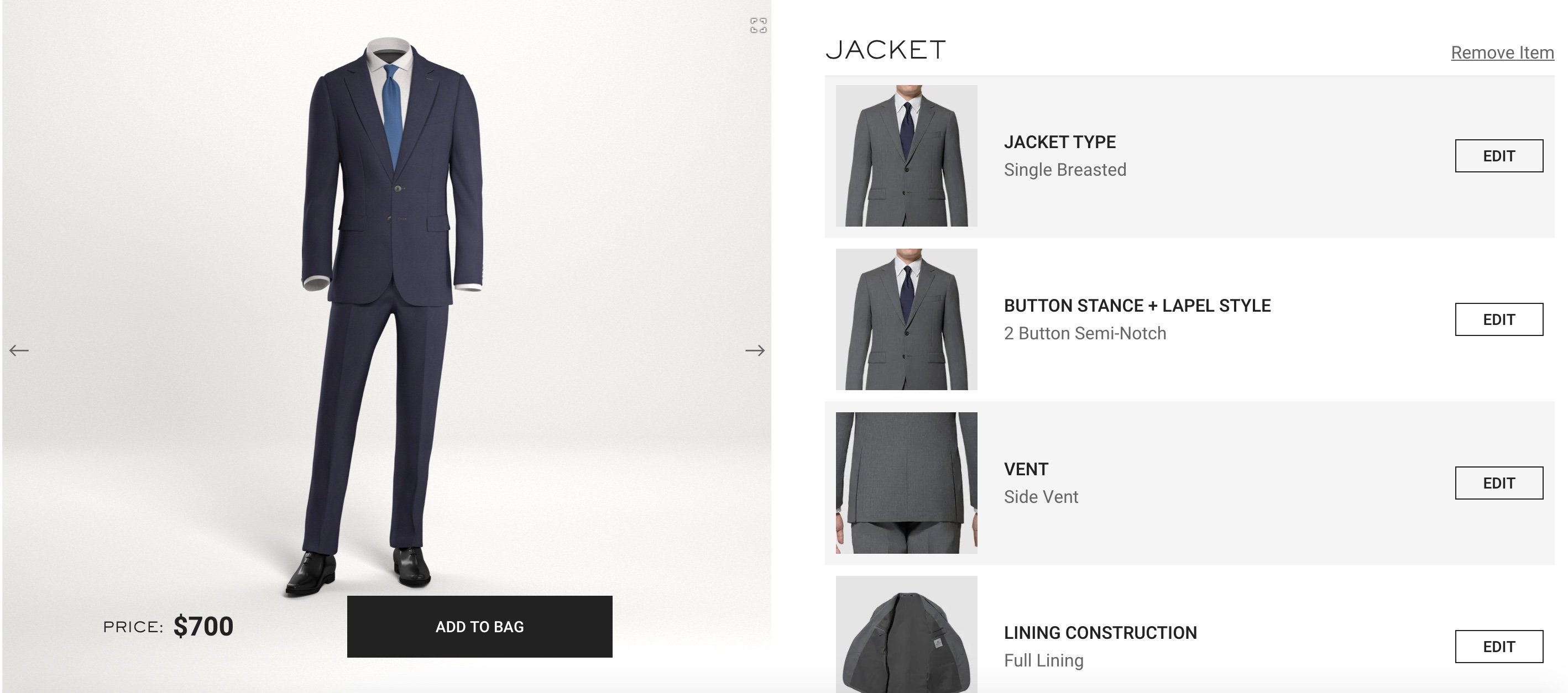How To Sell Custom Products Online
The challenge in selling custom products online is making your process accessible to your audience. In most cases, only the company or manufacturer has access to their products' design process. Yet, customers play an influential role in the development of customizable products. As a manufacturer, 3D configuration can help you sell custom products online. It acts as a personal designer for every visitor to your eCommerce store and can entice window shoppers, streamline their shopping experience, and convince them to purchase.
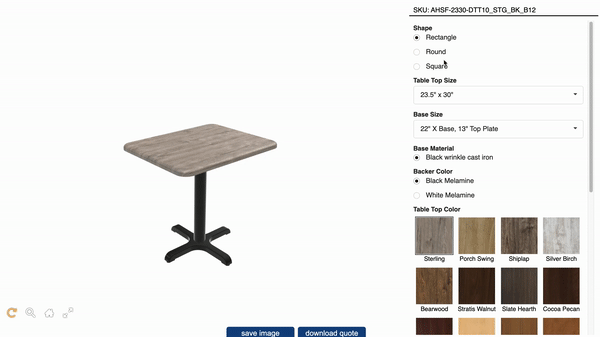
A custom product builder can put your customers in control by giving them tools to partake in the design process. It is designed with an interactive 3D model and visualizes various custom options like product materials, textures, colors, and much more. Potential buyers can interact with the model and add, apply, or alter specific features to create the product they wish to buy.
Customizers visualize changes in the price in real-time as they add features. It is also designed with a 360-degree viewer and zoom feature to scrutinize their product from all angles to ensure they get everything right. Customers can review the product once they have completed their customization before placing the order. 3D product customization can streamline how you create, promote, and sell custom products. It can sell merchandise online all by itself.
Getting Started with 3D Product Builder
You have to implement a 3D configuration in your store to start selling custom products online. The first step is to identify the problem you’re trying to solve. In this case, you need a solution to generate product visuals and help potential buyers to customize their own products. If you offer products that require different levels of customization, determine the extent of visualization that you need for each item. For example, highly customizable office chairs may require more custom options than a simple table. So, you’ll need to generate more 3D models for the chair for customers to design and customize it down to the finest details.
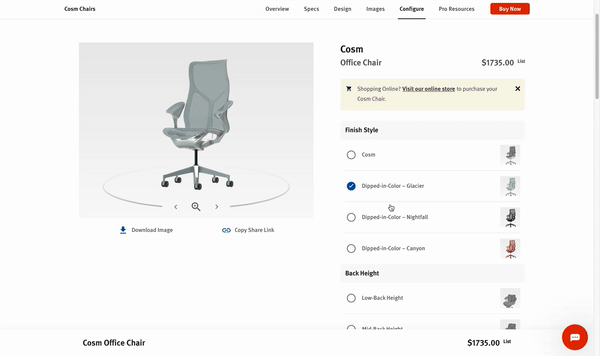
The next step is to go through your product catalog to access raw details of your product that help define each 3D model. You can also look for existing 3D models, a CAD file, or a 2D product to create interactive 3D product visuals for customizers. Lastly, find a unified visualization platform like Threekit and schedule some time with their experts to create 3D models and get your product builder up and running. With a customizer in your store, you’ll be ready to start selling your custom products online.
Using a 3D Customizer to Sell Different Custom Products Online
Selling custom products is one of the things that you can do better online than in a conventional brick and mortar store. Several eCommerce brands are leveraging customizers to sell a variety of products online.
1. ROAM’s Customizable Suitcases
ROAM uses a product customizer on its Shopify store that enables potential buyers to customize its suitcase to meet their needs.
-2.png)
ROAM’s suitcase customizer (roam.com)
They can customize the suitcase by choosing their favorite color for the shell down to the finest details like the zipper, binding, and wheels. ROAM’s wide variety of custom options gives the customer control of the design process.
2. Stratis Customizable Table
Stratis uses a BigCommerce product customizer that allows potential buyers to customize its tables. Customers can choose the right size, shape, and color for the tabletop and the material and color of the base.
-1.jpeg)
Stratis table customizer (stratisindustries.com)
The customizer is designed with a 360-degree viewer, which you can use to rotate the table and explore it from all angles. Thorough inspections can enhance confidence and entice potential customers to purchase.
3. Lovesac’s Sactionals Couch
Lovesac sells customizable Sactionals couches using a configurator in its store. The customizer enables customers to add covers, fills, sides, arms, and accessories to create the ideal couch.
.png)
Lovesac couch configurator (lovesac.com)
Lovesac also allows shoppers to reposition independent sections of the couch to ensure it fits in their home.
4. Kashiyama’s Custom Suits
Kashiyama adopted a customizer to offer customized high-end suits online. It offers a wide range of custom options like single or double-breasted, jacket lining, button stance, lapel style, and more.
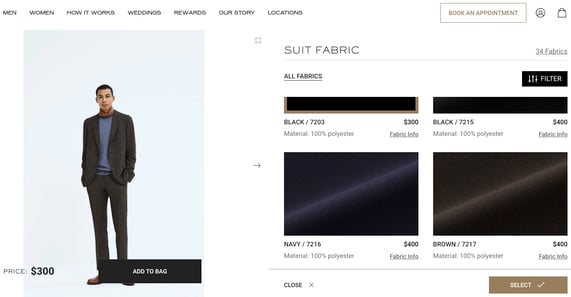
Kashiyama’s customizer options (kashiyama1927.com)
Kashiyama's customization process blends in-person tailoring and online shopping experience, which creates the perception of having a personal tailor.
5. Xenith’s Customizable Helmets
Xenith uses a Shopify product builder with an “explosion” view to highlight the features that set their helmet apart in terms of quality and safety.
-1.png)
Xenith’s exploded helmet (threekit.com)
The exploded view pulls apart its helmets’ components. Potential buyers can also use a 360-degree viewer to rotate the exploded helmet and analyze the parts in detail.
Benefits of Selling Custom Products Using Configurations
During customization, your configuration can educate shoppers about the product and enhance the perceived value of the item. It can attract new visitors and try to convert them. Here are some of the benefits of selling custom products using 3D configurations:
1. Reduce pre-purchase anxiety
Product customization is particularly helpful for big-ticket items like jewelry and home furniture because most customers won't make an investment without know exactly what they're going to get. With a configurator, you’ll give potential buyers the tools they need to inspect your custom product and help them see what they will get for their money. Customers can also view 3D images in AR to give them certainty and reduce any pre-purchase anxieties that discouraged them from buying your product online.
2. Attract, Engage, and Covert
Interactive 3D models can entice window shoppers into your store and engage them long enough for you to convert them. The customization process can take potential customers on a journey to show them what goes into the design and development of your products. It makes them part of the process and exploits emotional connection to entice them back to your site again. AR-viewable 3D images can also increase the level of engagement on your site and convince shoppers to purchase. Statistics indicate that 40% of consumers are willing to pay more for a product if they are able to explore it using AR.
3. Enhance confidence
Burying the important details in a pile of information and consultative content can overwhelm potential buyers and discourage them from purchasing. Customizers show only what the customer needs to know. For example, ROAM’s configurator provides brief information below the 3D model of each type of suitcase to help shoppers choose accurately.
-3.png)
ROAM’s customizer offers useful information (roam.com)
It cuts through the noise to answer the most important questions for the customer. Interactive 3D can also highlight to buyers that your product matches their specs. Showing buyers exactly how the product will meet their needs and what they will be getting for their money can boost their confidence and encourage them to buy.
4. Bridge the online-offline continuum
Brick and mortar brands can expand their stores online quicker by unifying customer experience across channels. If you’re offering custom products offline, omni-channel experiences can entice some of your customers to engage with your business in-store and online. Loyal in-store visitors can act as the founding block to build a larger customer base for your eCommerce business. 3D product images make it easier to bridge the online-offline continuum and help you create a unified omni-channel experience. It can blend in-store and online shopping experiences and boost sales in both channels.
5. Improve communication
Configurations are powered by interactive 3D models that allow the customer to tell exactly what they want to buy. Most people struggle to describe colors accurately. With a customizer, you can eliminate this frustration for the customer and entice them to buy the product. For example, Stratis' customizer provides a long list of colors available for its tabletop along with square snippets for visuals to ensure the customer picks the right color.
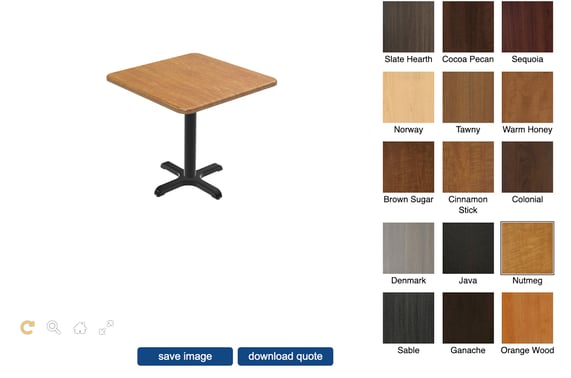
Stratis tabletop color options (stratisindustries.com)
Product customization can reduce miscommunication between you and your customers and encourage them to make a purchase. Improved communication can reduce errors and returns.
Threekit offers a 3D configurator designed with a 3D model, a 360-degree viewer, and other features that can streamline the sale process. Please contact us to schedule some time with one of our experts.
